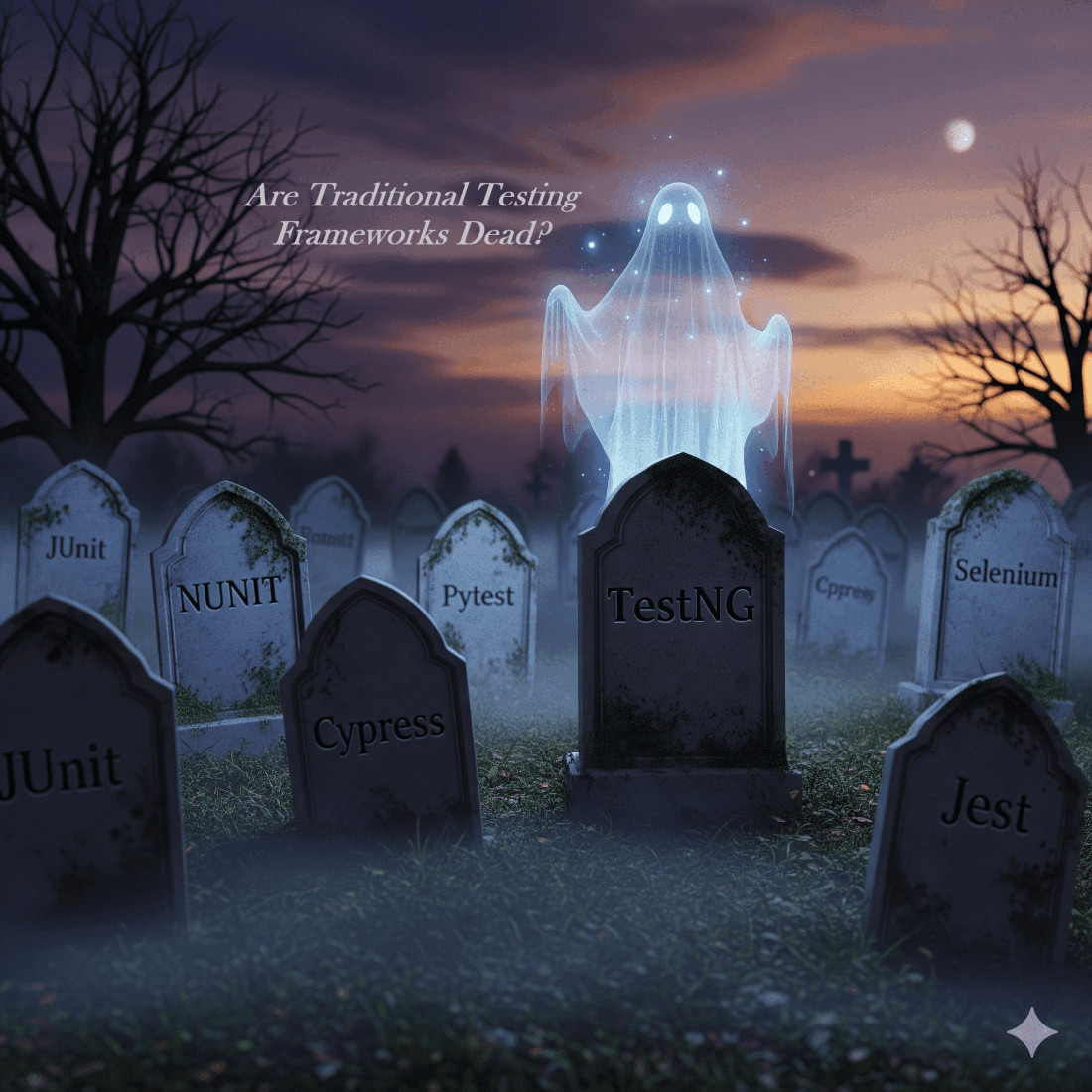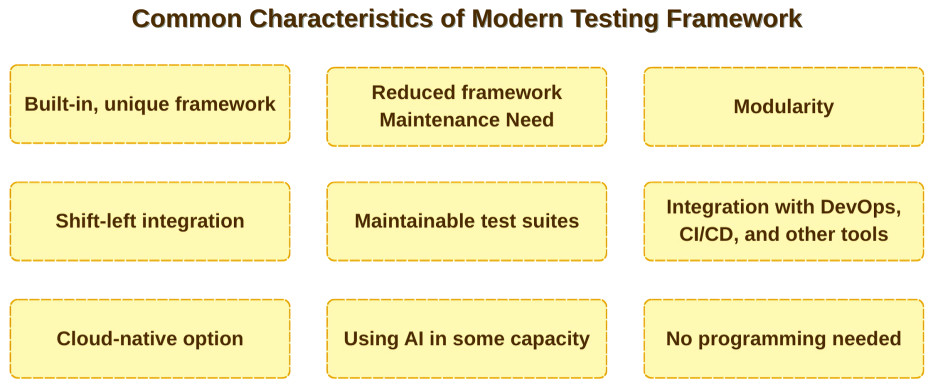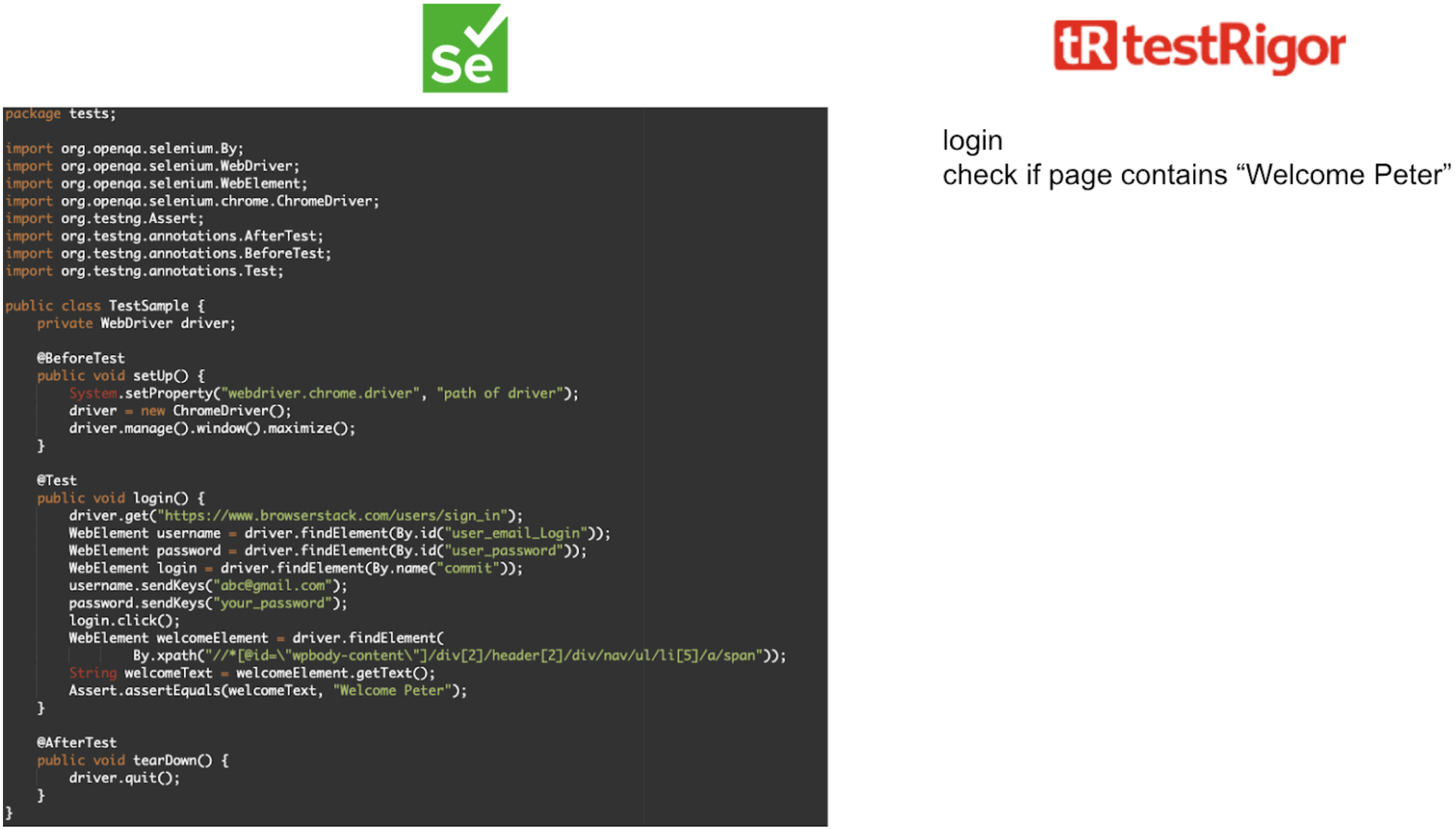Testing Frameworks are Dead
|
|
Testing frameworks are dead.
It’s a bold claim, isn’t it?
A quick search online might lead you to believe that with the rise of AI and codeless tools, the traditional testing framework is a relic of the past.
The truth is, while testing frameworks are surviving, they’re in dire need of evolving. They need to shed their rigid, one-size-fits-all skin and adapt to the fast-paced world of modern software development.
So, before you write them off, let’s explore why traditional testing frameworks can be limiting and how modernizing them can become the backbone of efficient, scalable, and maintainable testing in the age of AI.
| Key Takeaways: |
|---|
|

What Exactly is a Testing Framework?
The core purpose of a framework is simple: to bring order to chaos. It’s not just a collection of tools; it’s a structured system of rules, guidelines, and libraries that dictate how tests are written and executed.
Without one, every test case would be a unique snowflake, making it nearly impossible to maintain, share, or scale your testing. A good framework provides
- standardization (everyone follows the same rules)
- promotes reusability (so you can use test components over and over)
- and ensures maintainability (so updating tests isn’t a nightmare)
It’s the difference between building a house with a proper plan and just stacking bricks, hoping it won’t fall over.
Here are some in-depth guides on this topic:
- Test Automation Frameworks: Everything You Need to Know
- How to Build a Test Automation Framework
- Building Your Own Test Automation Framework: Pros and Cons
Challenges with Traditional Testing Frameworks
For a long time, traditional frameworks were the standard. They were built on the idea of writing code to test other code. This worked well, but it came with some major drawbacks:
- High Maintenance: Every time a button moved or a page design changed, your test script would break. Keeping these scripts updated, a process known as “test maintenance”, became a huge, time-consuming job.
- Difficulty Keeping Up With Development Pace: In Agile development, writing test scripts and maintaining testing frameworks become a challenge. The time crunch is such that one finds it hard to keep up. So chances are that hacks might be used to keep the code-based testing framework going. Over time, this debt accumulates.
- Steep Learning Curve: These frameworks often require testers to have a strong background in programming. This created a bottleneck, as not everyone on a team could contribute to test automation.
- Slow Feedback: Traditional frameworks often ran tests in a sequential, linear fashion. In today’s “build and deploy” environment, this slow feedback loop can grind a project to a halt, as developers have to wait for test results before they can release new features.
- They are Person-Dependent and Limited: Frameworks built in-house are generally spearheaded by a few team members and often intend to solve only a few problems. This might satisfy present needs and a few projects, but down the road, keeping up with this creation becomes costly.
Do You Still Need a Testing Framework?
The short answer is yes. The move away from traditional frameworks isn’t a rejection of the idea of a framework itself, but a shift toward tools that allow testers to focus on testing rather than maintaining test frameworks.
While the traditional way of building frameworks is not recommended, here’s why your team still needs one to succeed.
- Scalability and Growth: Think of a small startup with just a few features. You can get by with a simple set of tests. But what happens when your product grows from 10 features to 100? A good framework provides the structure you need to manage that growth. It ensures your testing efforts can scale along with your product, without becoming a tangled mess that nobody can understand. Read more: Test Scalability.
- Efficiency and Reusability: Have you ever copied and pasted the same block of code over and over again? That’s what happens without a framework. A framework allows you to create reusable components, things like login functions or database connections, that you can use in dozens of different tests. This “don’t repeat yourself” principle saves a massive amount of time and effort.
- Collaboration and Standardization: When everyone on a team follows their own style of writing tests, things get confusing fast. A framework provides a standardized approach. It acts as a set of rules that everyone can agree on, making it easier for new team members to get up to speed and for everyone to collaborate seamlessly. It ensures that your tests are consistent and easy to read, no matter who wrote them.
- Maintainability and Stability: A well-designed framework makes your test suite easier to maintain. When a test breaks, the framework helps you quickly identify the root cause. This structure prevents your test suite from becoming a burden, ensuring your tests remain a reliable safety net rather than a source of frustration. A stable, well-maintained test suite gives your team confidence in every release.
The Evolution, Not the End: The Modern Approach to Testing Frameworks
In the past, a “framework” was the thing you built yourself. You’d download a tool like Selenium or Cypress, and then you’d spend weeks or months coding a system around it. This included creating a structure for your tests, writing custom libraries for common actions, and setting up the reporting. The framework was the code you wrote yourself to make the tool work for your specific needs.
Testing frameworks are no longer rigid, monolithic beasts. The modern framework is flexible, adaptable, and designed to integrate seamlessly into a fast-paced development world.
So, what does this evolution look like?
- From Rigid to Flexible: The old guard of testing frameworks often required strict adherence to a single structure. Today’s frameworks are modular, allowing teams to pick and choose the components they need. You can use one tool for your test runners, another for reporting, and a third for managing test data, all working together harmoniously.
- Built-In Framework: A well-made modern framework will come with its own built-in framework that can be used smoothly by testers without the worry of maintaining it.
- Shift-Left Integration: Modern frameworks are no longer an afterthought. They are designed for early and continuous testing, integrating directly into the development lifecycle. This “shift-left” approach means tests are written and run as code is developed, catching bugs before they can cause major headaches.
- Focus on Test Maintainability: The focus has shifted from simply writing tests to creating maintainable and scalable test suites. This is a core part of the modern framework’s design, using principles like code reusability and clear organization to ensure your test suite doesn’t become a tangled mess as your application grows.
- Integration with DevOps: In a world of continuous integration and continuous delivery (CI/CD), frameworks are the linchpin. They are built to be triggered automatically with every code change, enabling continuous testing and providing instant feedback to the development team.
- Cloud-Native Adoption: Frameworks are now designed to run on scalable cloud infrastructure, allowing teams to execute thousands of tests in parallel without managing their own hardware. This is a testament to their adaptability and continued relevance.

The New Mindset: Minimum Framework Maintenance
Instead of a select few building a testing framework by patching multiple libraries and tools together, all by using code. And then requiring testers to learn coding to write test scripts, there’s a fresh way of doing things. This presents options like:
- Codeless Tools: These tools let you create tests by simply interacting with the application. You click, type, and swipe, and the tool records your actions and builds the test for you. This makes test automation accessible to everyone on the team, from product managers to manual testers.
- AI-Driven Platforms: These tools use artificial intelligence to solve the maintenance problem. They can “see” a web page like a person does, so if a button moves, the AI knows where to find it. This makes the tests much more robust and reduces the amount of time spent on fixing broken scripts. Some can even analyze code and suggest new tests on their own.
But there’s a catch here. These codeless testing platforms and AI-driven tools may promise to let anyone, even those without a coding background, create and run tests with remarkable speed. You can simply interact with your application, and the tool records your actions, automatically generating a test. It’s fast, intuitive, and seemingly eliminates the need to write a single line of code. Because these tools can automate the creation of tests, people assume they’ve made the underlying framework obsolete.
These new technologies aren’t replacing frameworks; they’re often built on top of them. Think of the ones that abstract over Selenium by offering a shinier interface and a few bells and whistles. They handle the tedious task of test script generation, but the fundamental structure – the rules for how tests are organized, managed, and executed – still relies on an outdated framework. You’ll still have to put in time and effort battling the shortcomings of the underlying framework. This problem is what’s explained over here and backed by statistics – Is AI Slowing Down Test Automation? – Here’s How to Fix It.
The question then arises – can we truly find a better way to automate testing?
The answer lies in a platform that offers a unique framework of its own.
The Modern Way: Opting for a “Testing Solution”
The shift is now from traditional, code-heavy approaches to modern, integrated, and accessible testing platforms. Instead of building a framework from scratch, teams are increasingly opting for tools like testRigor, a complete testing solution that includes a sophisticated, Gen AI-driven framework with native integrations and customizations.
- The Framework is Already Built-in: testRigor’s core is a robust, no-code, AI-driven framework. It already has the “rules” and “guidelines” for how tests are written (in plain English), how they are executed, and how they report results. This way, you can benefit from a pre-built testing framework that’s not only easy to use but also requires no maintenance on your end. This means that the focus remains on software testing rather than framework maintenance. As testRigor has its own unique AI-based framework, there are fears of unknown issues, as is the case with tools that abstract over Selenium.
- Easy-to-use Interface: Unlike traditional frameworks that present code editors, testRigor offers a simplistic UI. Being a cloud-based platform, you just need to register yourself on their website and then create test cases in English. Read: Creating Your First Codeless Test Cases.
- Plain English Scripting: While traditional frameworks generally require skilled programmers, testRigor democratizes software testing by allowing everyone to write tests in plain English. This means that anyone can write and understand the test cases.

- Faster Test Creation: Tests can be created quickly, as testRigor offers different ways to capture tests in plain English. Read: All-Inclusive Guide to Test Case Creation in testRigor.
- Negligible Test Maintenance: When the UI changes, testRigor can adjust the test script’s steps to the new changes and present it for the user’s review. And because testRigor doesn’t rely on technical locators, there is no need to constantly fix tests when XPath/CSS selectors change, which makes it far easier to deal with. Read: testRigor Locators.
- Helpful Integrations: You can expand your testing ecosystem by integrating with CI/CD tools and other test management tools as well.
- All Under One Roof: You can test across multiple platforms like the web, mobile, mainframe, and desktop, and check a variety of scenarios, even those AI features like interactions with LLMs and chatbots.
Conclusion
The future of testing is about understanding the essence of a testing framework and then finding it in the right tools. The efficiency and accessibility of AI-driven and codeless tools are the perfect complement to the structural integrity of a well-designed framework. These modern frameworks are the very foundation upon which those exciting new technologies are built. Moreover, with tools like testRigor that offer their own built-in framework, one doesn’t have to worry about the challenges of maintaining the framework itself and can focus solely on software testing.
| Achieve More Than 90% Test Automation | |
| Step by Step Walkthroughs and Help | |
| 14 Day Free Trial, Cancel Anytime |












